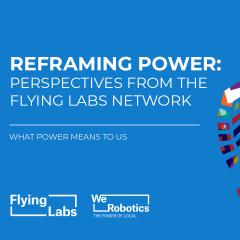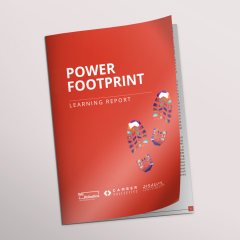
Humanitarian Robotics: The $15 Billion Question?
July 12th, 2016

By Patrick Meier
The International Community spends around $25 Billion per year to provide life saving assistance to people devastated by wars and natural disasters. According to the United Nations, this is $15 Billion short of what is urgently needed; that’s $15 Billion short every year. So how do we double the impact of humanitarian efforts and do so at half the cost?

Perhaps one way to deal with this stunning 40% gap in funding is to scale the positive impact of the aid industry. How? By radically increasing the efficiency (time-savings) and productivity (cost-savings) of humanitarian efforts. This is where Artificial Intelligence (AI) and Autonomous Robotics come in. The World Economic Forum refers to this powerful new combination as the 4th Industrial Revolution. Amazon, Facebook, Google and other Top 100 Fortune companies are powering this revolution with billions of dollars in R&D. So whether we like it or not, the robotics arms race will impact the humanitarian industry just like it is impacting other industries: through radical gains in efficiency & productivity.
Take Amazon, for example. The company uses some 30,000 Kiva robots in its warehouses across the globe (pictured below). These ground-based, terrestrial robotics solutions have already reduced Amazon’s operating expenses by no less than 20%. And each new warehouse that integrates these self-driving robots will save the company around $22 million in fulfillment expenses alone. According to Deutsche Bank, “Bringing the Kivas to the 100 or so distribution centers that still haven’t implemented the tech would save Amazon a further $2.5 billion.” As is well known, the company is also experimenting with aerial robotics (drones). A recent study by PwC (PDF) notes that “the labor costs and services that can be replaced by the use of these devices account for about $127 billion today, and that the main sectors that will be affected are infrastructure, agriculture, and transportation.” Meanwhile, Walmart and others are finally starting to enter the robotics arms race. The former is using ground-based robots to ship apparel and is actively exploring the use of aerial robotics to “photograph ware-house shelves as part of an effort to reduce the time it takes to catalogue inventory.”

What makes this new industrial revolution different from those that preceded it is the fundamental shift from manually controlled technologies—a world we’re all very familiar with—to a world powered by increasingly intelligent and autonomous systems—an entirely different kind of world. One might describe this as a shift towards extreme automation. And whether extreme automation powers aerial robotics, terrestrial robotics or maritime robots (pictured below) is besides the point. The disruption here is the one-way shift towards increasingly intelligent and autonomous systems.

Why does this fundamental shift matter to those of us working in humanitarian aid? For at least two reasons: the collection of humanitarian information and the transportation of humanitarian cargo. Whether we like it or not, the rise of increasingly autonomous systems will impact both the way we collect data and transport cargo by making these processes faster, safer and more cost-effective. Naturally, this won’t happen overnight: disruption is a process.
Humanitarian organizations cannot stop the 4th Industrial Revolution. But they can apply their humanitarian principles and ideals to inform how autonomous robotics are used in humanitarian contexts. Take the importance of localizing aid, for example, a priority that gained unanimous support at the recent World Humanitarian Summit. If we apply this priority to humanitarian robotics, the question becomes: how can access to appropriate robotics solutions be localized so that local partners can double the positive impact of their own humanitarian efforts? In other words, how do we democratize the 4th Industrial Revolution? Doing so may be an important step towards closing the $15 billion gap. It could render the humanitarian industry more efficient and productive while localizing aid and creating local jobs in new industries.
Recent Articles

